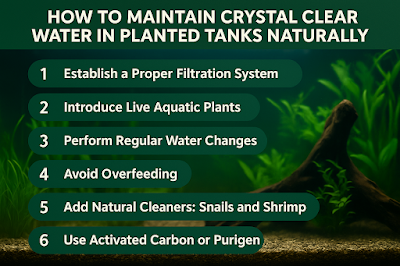Why CO₂ is Important for Planted Aquariums
CO₂ is a critical element that plants use during photosynthesis to produce energy and grow. In low-tech tanks without CO₂ injection, plants rely solely on the limited CO₂ naturally dissolved in water, which can restrict growth. For vibrant, lush aquascapes, CO₂ supplementation is often required, especially when using high-intensity lighting. Injected CO₂ enhances plant metabolism, improves coloration, and speeds up the growth rate of demanding species like Monte Carlo or Rotala.
The Role of Oxygen in the Aquascape Ecosystem
Oxygen (O₂) is equally important—especially for livestock, beneficial nitrifying bacteria, and plants during the dark phase when photosynthesis ceases and respiration continues. At night, plants and fish consume oxygen, which can cause O₂ levels to drop dangerously low in tanks with poor water circulation or excessive plant biomass. Maintaining sufficient oxygen levels helps prevent fish stress, avoids suffocation, and supports healthy biological filtration.
Balancing CO₂ Injection and Aeration
A common challenge in planted tanks is finding the right balance between CO₂ injection and surface agitation. High surface agitation increases oxygen exchange but also causes CO₂ to escape more quickly. Aquascapers should use inline diffusers or atomizers to maximize CO₂ efficiency and consider turning on air stones or surface skimmers at night to maintain oxygen levels. Using a solenoid valve with a timer ensures CO₂ is only active during lights-on periods, preventing waste and maintaining balance.
Monitoring and Measuring CO₂ and Oxygen
To achieve proper balance, it’s important to monitor CO₂ concentration using a drop checker with a 4 dKH reference solution. Ideal CO₂ levels should range between 20–30 ppm. Oxygen levels can be harder to measure directly, but signs of distress in fish or excessive algae growth may indicate an imbalance. Good circulation, a healthy plant load, and proper fertilization routines help maintain optimal gas exchange.
Signs of Imbalance and How to Fix Them
If CO₂ is too high, fish may gasp at the surface or become lethargic. If oxygen is too low, the same symptoms may appear—especially during early morning hours. On the other hand, low CO₂ levels often result in slow plant growth and algae outbreaks. To fix this, adjust the CO₂ rate gradually, improve surface movement during lights-off periods, and ensure proper plant trimming to avoid overcrowding and oxygen depletion.
Conclusion: A Harmonious Balance for Healthy Aquascapes
Understanding the relationship between CO₂ and oxygen is key to mastering aquascaping. By fine-tuning both elements, you create a stable, vibrant, and algae-free environment. Healthy gas balance not only supports plant growth but also ensures fish and microbial life thrive in your underwater ecosystem. Every aquascaper should prioritize this harmony to enjoy long-term success in the planted tank hobby.




